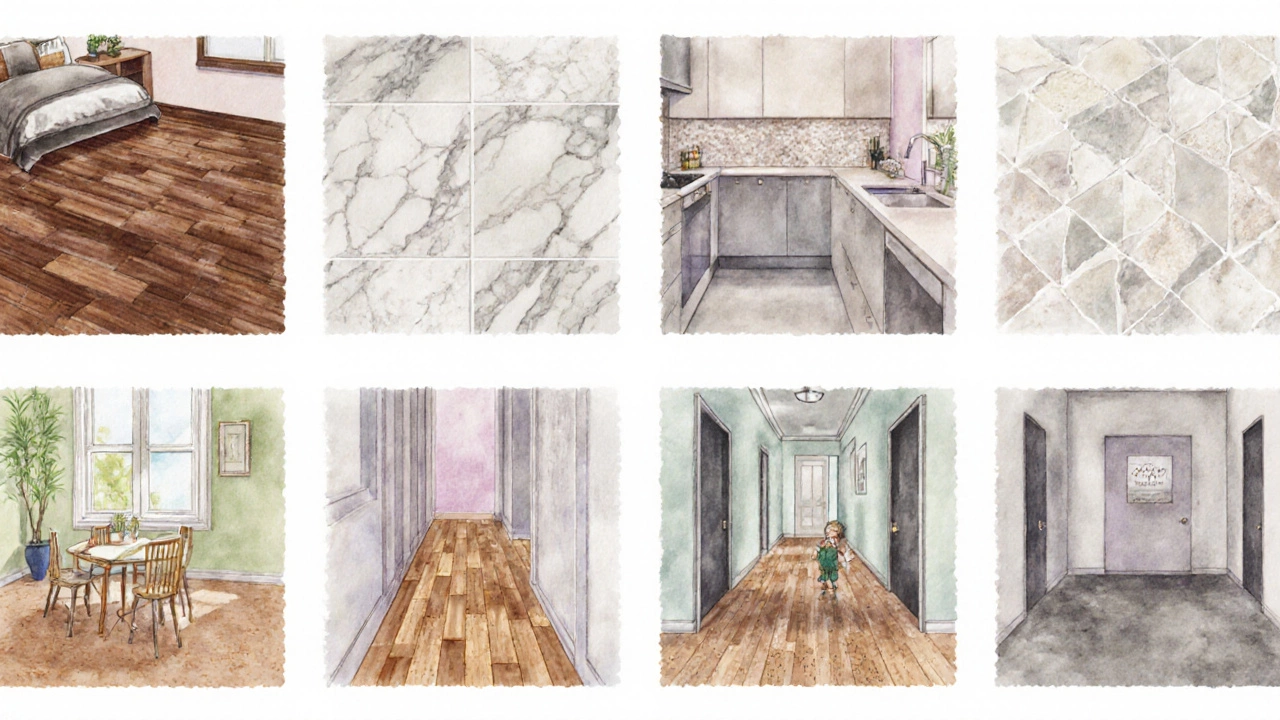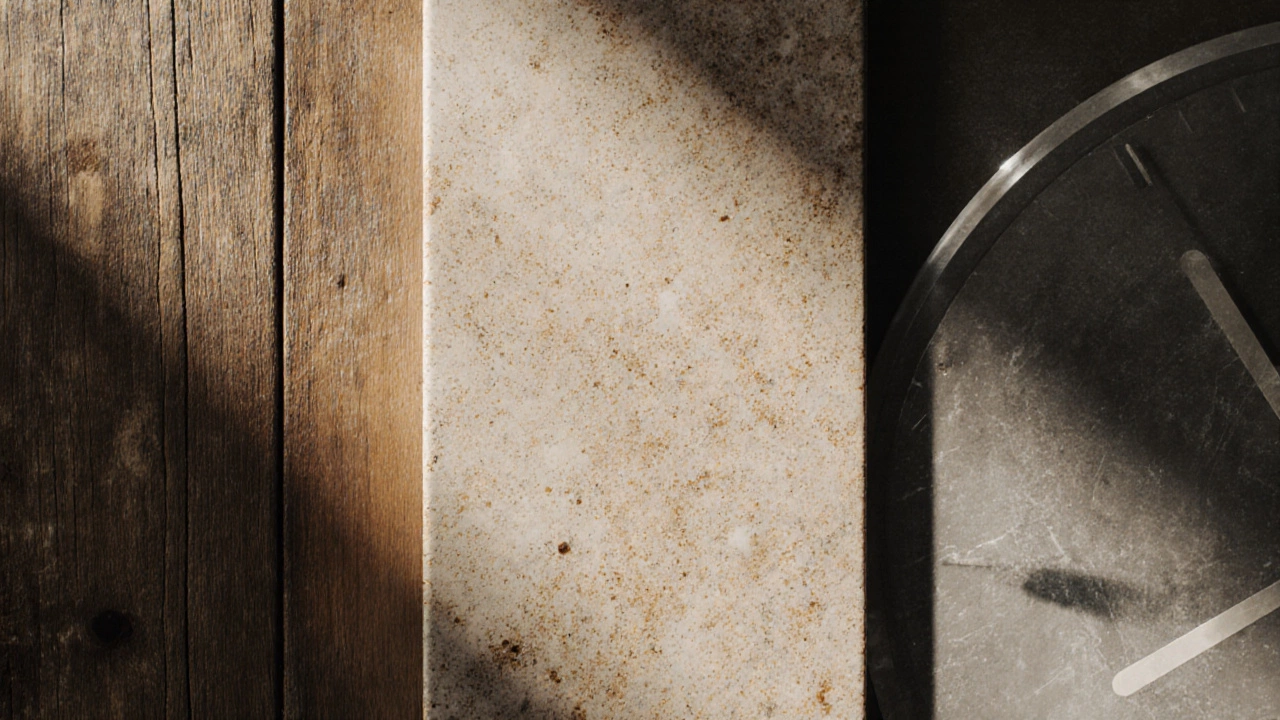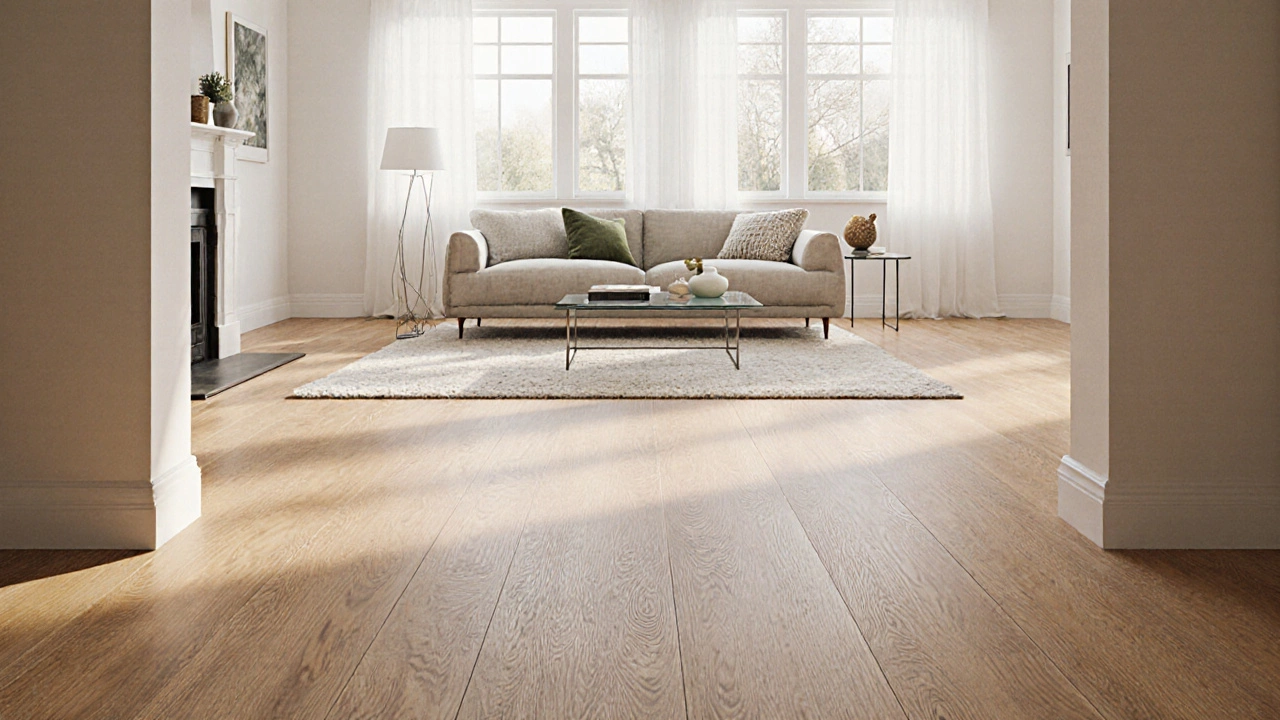Timeless Flooring Selector
Find Your Perfect Flooring
Recommended Options
Select your room type and preferences to get personalized recommendations.
When you’re planning a home remodel, the biggest fear is picking a floor that looks dated in a few years. The good news? Some materials have stood the test of time, blending durability with a look that feels fresh season after season. Below you’ll discover which flooring options truly qualify as timeless flooring and how to make them work in any room.
Timeless Flooring Defined
Flooring is a building component that covers the structural slab and provides a finished surface for walking, furniture placement, and interior aesthetics. While trends come and go, timeless flooring refers to materials whose design language, durability, and adaptability keep them relevant for decades.
Classic Materials That Never Age
- Hardwood is a natural wood product harvested from trees, prized for its warmth and grain. Typical species include oak, walnut, and maple, each offering a distinct patina that deepens with age.
- Natural Stone includes marble, travertine, and slate. These dense rocks provide a luxurious feel and develop a unique character through natural wear patterns.
- Ceramic Tile is a fired clay product available in matte, glossy, and textured finishes. Its versatility lets designers create patterns that never look outdated.
- Luxury Vinyl Plank (LVP) mimics the look of wood or stone while offering water resistance and high durability, making it a practical choice for high‑traffic zones.
- Bamboo is a fast‑growing grass harvested for its strong, strand‑woven boards. Its sleek linear grain feels modern yet remains timeless.
- Cork is a renewable material harvested from the bark of cork oak trees. Its soft, cushioned feel adds comfort without compromising style.
- Polished Concrete is a poured concrete slab that’s ground and sealed to a high gloss. Its industrial chic look can be softened with rugs or left stark for a modern edge.
- Engineered Wood combines a real wood veneer with a layered plywood core, delivering the look of solid hardwood with greater stability.

Side‑by‑Side Comparison
| Material | Durability | Style Versatility | Maintenance | Approx. Cost (persqft) |
|---|---|---|---|---|
| Hardwood | High (refinable) | Excellent - works with traditional & modern | Periodic sanding & sealing | $5‑$12 |
| Natural Stone | Very High | Excellent - adds luxury | Seal every 2‑3years | $8‑$20 |
| Ceramic Tile | Very High | Excellent - endless patterns | Simple grout cleaning | $3‑$10 |
| LVP | High | Good - mimics wood/stone | Wet‑mop occasional | $2‑$7 |
| Bamboo | Medium‑High | Good - sleek linear look | Regular sweeping, occasional seal | $4‑$9 |
| Cork | Medium | Good - warm, earthy tones | Seal to protect moisture | $3‑$8 |
| Polished Concrete | Very High | Excellent - minimalist or industrial | Dust mop, occasional reseal | $4‑$9 |
| Engineered Wood | High | Excellent - similar to hardwood | Light cleaning, no refinishing | $6‑$13 |
Why These Materials Stay Classic
Three key reasons keep these floors from ever looking passé:
- Natural Aesthetics: Wood grain, stone veining, and concrete sheen are tied to nature. Humans are wired to find natural textures calming, so they remain appealing regardless of interior trends.
- Adaptable Color Palettes: Most timeless floors come in neutral or earth‑tone ranges that pair well with any wall color, furniture style, or décor accent.
- Longevity & Patina: Materials that develop a subtle patina-like hardwood or stone-gain character over time, turning wear into a feature rather than a flaw.
Choosing the Right Timeless Floor for Each Room
Not every material shines in every space. Here’s a quick guide:
- Living Room: Hardwood or engineered wood offers warmth and can handle furniture movement. Polished concrete works for a sleek, modern lounge.
- Kitchen: Ceramic tile or LVP provide water resistance. Stone slab adds a high‑end look but requires sealing.
- Bathroom: Ceramic tile is the safest bet; stone adds spa‑like luxury if properly sealed.
- Bedrooms: Hardwood, bamboo, or cork give a soft underfoot feel. Cork’s thermal insulation is a bonus for chilly nights.
- Home Office: Engineered wood balances stability with comfort, while polished concrete helps with grounding and ergonomics.

Styling Tips to Keep Your Floor Fresh
Even the most classic floor can feel dated if paired with the wrong décor. Apply these quick tricks:
- Layer with Rugs: A neutral rug adds texture without clashing with the floor’s natural pattern.
- Mix Materials Sparingly: Pair a hardwood lounge area with a stone kitchen island for contrast while keeping a cohesive color story.
- Use Simple Furniture Lines: Clean‑lined pieces let the floor remain the star.
- Play with Light: Warm lighting enhances wood tones; cooler LEDs highlight stone veining.
Maintenance Best Practices
Sticking to a regular care routine ensures your floor looks great for decades.
- Daily Dust Mop or Vacuum: Removes grit that can scratch surfaces.
- Weekly Wet Mop (where appropriate): Use pH‑neutral cleaners for wood and stone; avoid harsh chemicals on LVP.
- Annual Seal or Refinish: Hardwoods and natural stone benefit from resealing every 2‑3years. Polished concrete may need a reseal every 5years.
- Spot‑Treat Stains Quickly: Blot, don’t rub. For oil‑based stains on wood, apply a mineral oil finish.
- Prevent Moisture Damage: Use area rugs in entryways and consider a dehumidifier in damp climates like London.
Frequently Asked Questions
Which timeless flooring is best for a high‑traffic home?
For homes where rooms see heavy footfall, polished concrete, natural stone, and high‑grade hardwood (like oak) offer the best wear resistance. They can be refinished or resealed, extending their lifespan.
Can I install timeless flooring myself?
DIY‑friendly options include click‑lock LVP and some engineered wood systems. For stone, tile, or polished concrete, professional installation is advisable to avoid uneven surfaces and ensure proper sealing.
How do I keep hardwood from looking worn over time?
Place area rugs in high‑traffic zones, use felt pads under furniture, and schedule a sanding/refinish every 7‑10years. Regular dust‑mopping also reduces grit that scratches the finish.
Is cork a good choice for a family home with kids?
Cork is soft and absorbs impact, making it comfortable for play areas. It resists stains when sealed, but it can dent under heavy furniture. Pair it with furniture pads for extra protection.
Do I need a special underlayment for LVP?
Many LVP products come with an attached underlay. If you install it over concrete, a moisture‑blocking membrane is recommended to prevent swelling.
Choosing a floor that won’t go out of style is less about chasing the latest fad and more about investing in materials that age gracefully, match a variety of décor, and stand up to everyday life. With the options above, you can design a home that feels fresh today and stays appealing for years to come.
